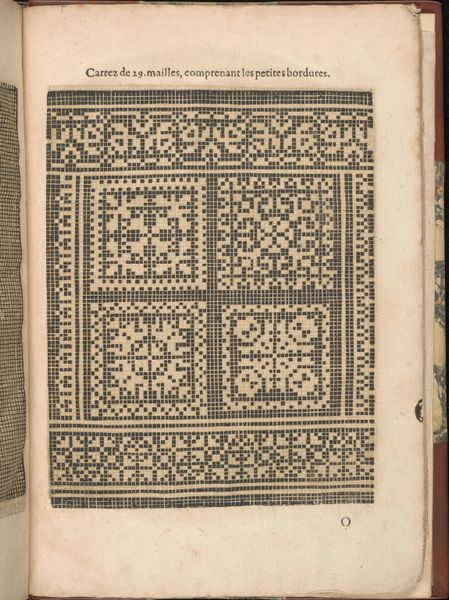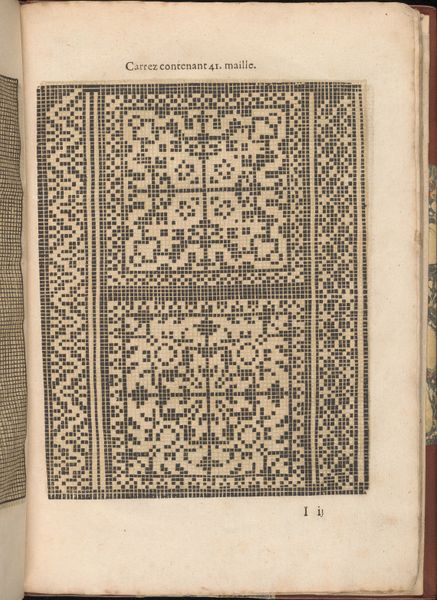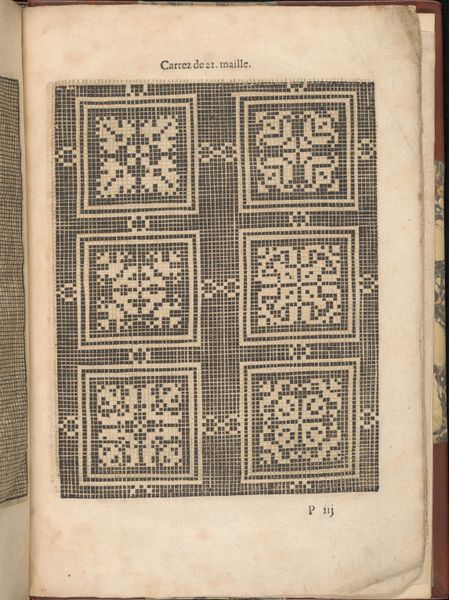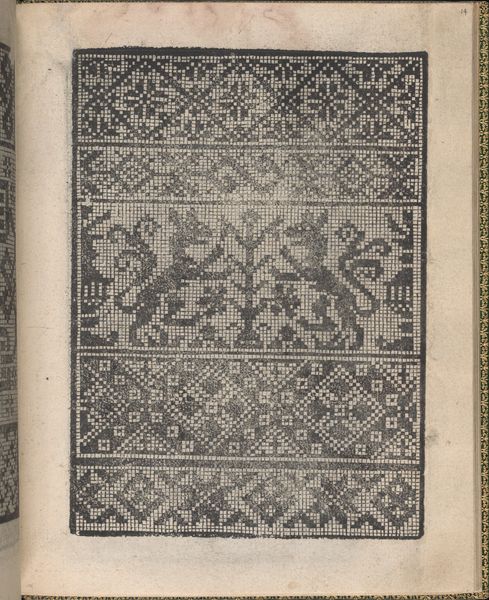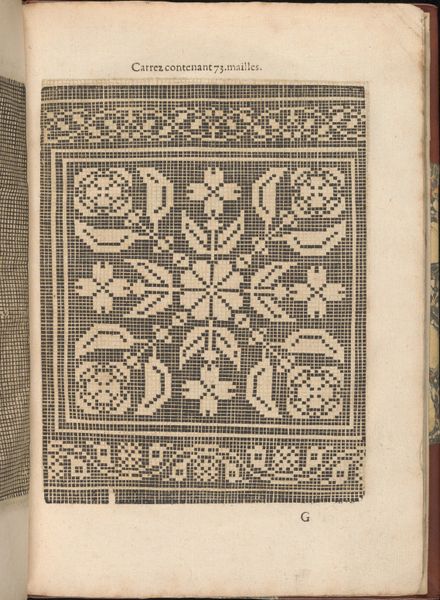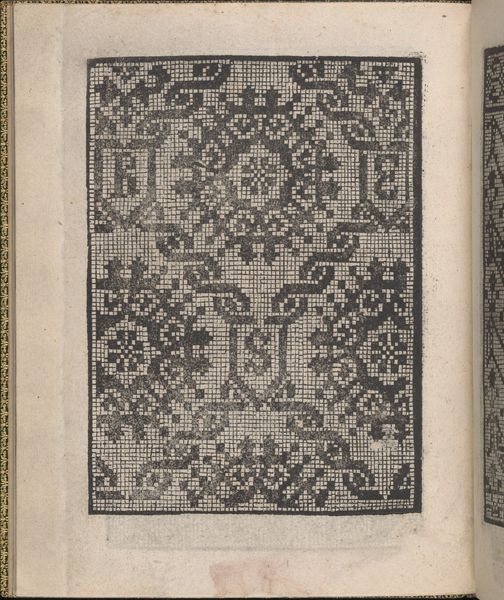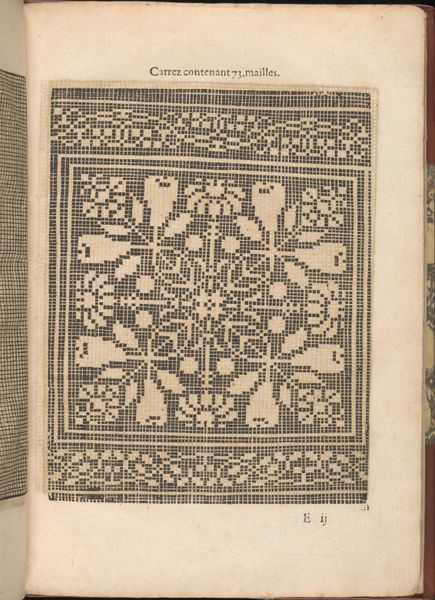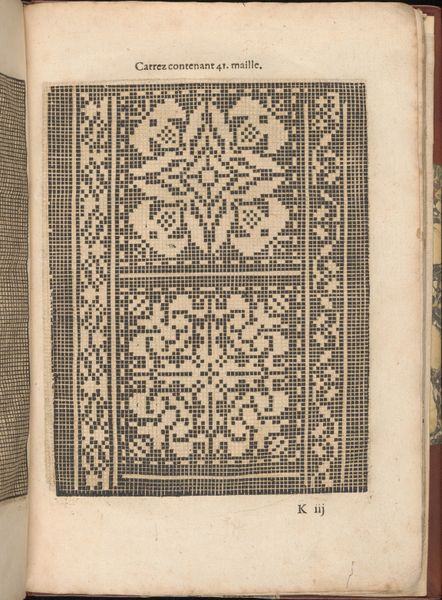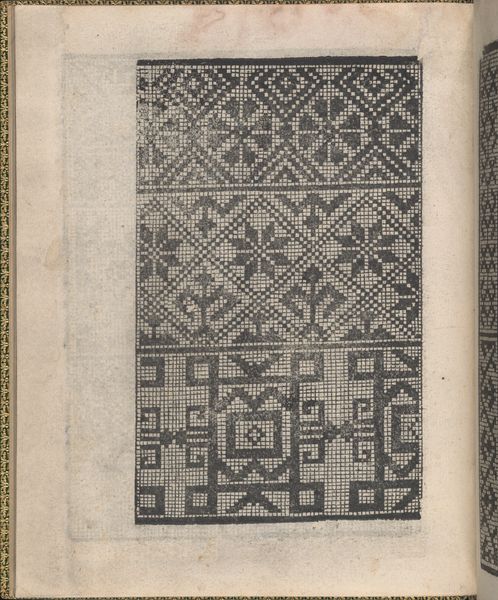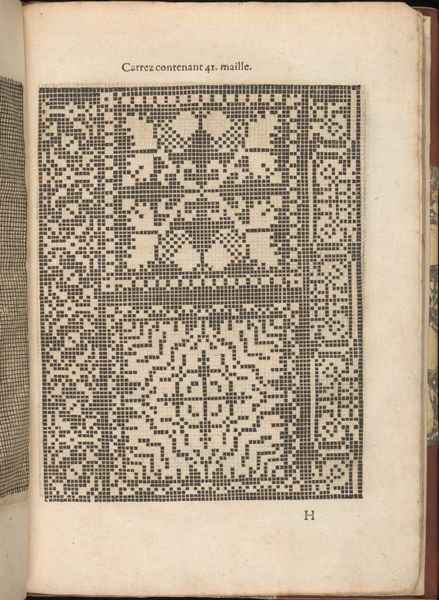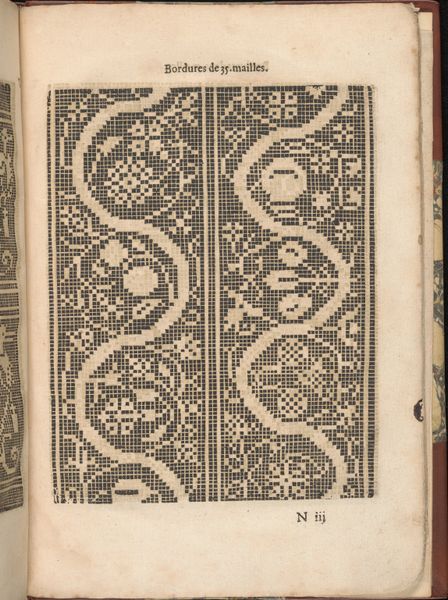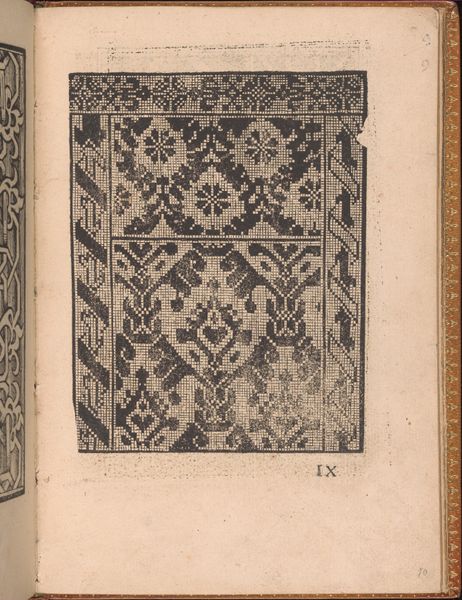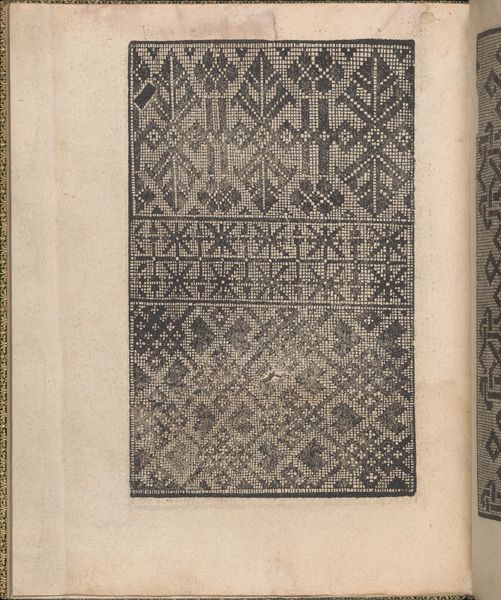
Les Secondes Oeuvres, et Subtiles Inventions De Lingerie du Seigneur Federic de Vinciolo Venitien, page 54 (recto) 1603
0:00
0:00
drawing, graphic-art, print, paper, engraving
#
drawing
#
graphic-art
# print
#
paper
#
form
#
11_renaissance
#
geometric
#
line
#
decorative-art
#
italian-renaissance
#
engraving
Dimensions: Overall: 9 7/16 x 6 1/2 in. (24 x 16.5 cm)
Copyright: Public Domain
Curator: Today, we’re observing a page from "Les Secondes Oeuvres, et Subtiles Inventions De Lingerie du Seigneur Federic de Vinciolo Venitien," created by Federico de Vinciolo in 1603. It's an engraving on paper. What are your initial thoughts? Editor: My immediate reaction is a kind of rigid order, it almost looks like an early computer punchcard. The repetition of these geometric motifs creates a very deliberate and almost austere aesthetic. Curator: Absolutely. Vinciolo was offering patterns for lacemaking and embroidery. This particular plate showcases designs using squares, internally patterned and arranged methodically within larger borders. Look at how the squares form the basis of these more complex repeating figures. Editor: Which speaks volumes about the expectations placed on women's labor during the Renaissance. This wasn't simply about aesthetics; it was about adhering to precise patterns, conforming to societal expectations of skill and domesticity, using tools considered acceptable, indeed feminine. How much control did a woman actually have over her own creative expression, trapped within these pre-designed, meticulous grids? Curator: I think your reading overstates the case somewhat. The framework Vinciolo provides allows for variation and adaptation by the embroiderer, even while adhering to the geometric structure. We must appreciate the visual harmony created by the contrast of filled and empty space within these square modules and the symmetry exhibited across the page, which creates rhythm and an attractive, formal coherence. Editor: But isn't the perceived "harmony" really just a reflection of Renaissance ideals of order and hierarchy? To celebrate only the pattern, not question its constraints, is to participate in an ongoing project that silences the historical experiences of marginalized craft workers. We should be questioning the narrative of perfection these works embody. Curator: I would counter that we can acknowledge those constraints while still examining the success of this work as a pattern book page. It provides a structural clarity that I appreciate. Its geometrical approach provides order. Editor: Perhaps our disagreement illustrates precisely what makes this print so compelling: its ability to generate varied readings across centuries. I, for one, can’t look past the history of craftwork that it evokes.
Comments
No comments
Be the first to comment and join the conversation on the ultimate creative platform.
